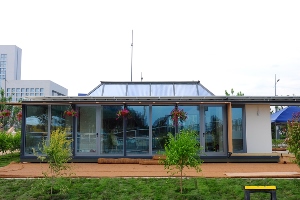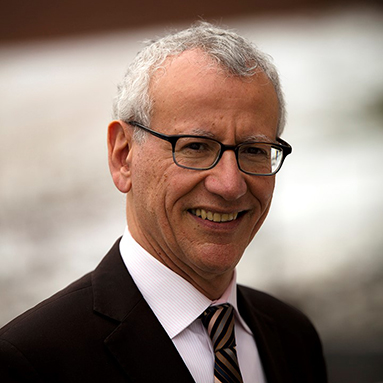After more than a year of design, materials testing, and pre-competition construction, members of a three-university team – led by Worcester Polytechnic Institute (WPI) – have reassembled and furnished their solar house in Datong, China, to compete in Solar Decathlon China 2013.
WPI is part of team BEMANY, an international, multi-university team with members from Ghent University in Belgium and New York University Polytechnic Institute, one of 20 teams to participate in the Solar Decathlon competition in China. (The name BEMANY represents BE for UGhent in Belgium, MA for WPI in Massachusetts, and NY for NYU-Poly in New York.)

This highly competitive program, a joint initiative of the U.S. Department of Energy and the China National Energy Administration, challenges university teams to design, build and operate attractive and affordable net-zero-energy houses powered by the sun. The team branded the solar house the Solatrium, for its power source and main architectural feature, an atrium.
The competition runs Aug. 2-13, and the 20 competing teams have built their houses and will display them to the public. A major goal of this competition is to show consumers how to save money and energy with affordable, clean energy products that are available today. The competition also provides participating students with hands-on experience and unique training that prepares them to enter the clean energy workforce. The teams will be judged on 10 criteria: architecture, market appeal, engineering, communications, affordability, comfort zone, hot water, appliances, home entertainment, and energy balance.
Team BEMANY will be required to host members from other teams for a "movie night" and two dinner parties, and to wash a load of laundry during the competition. Judges will monitor the amount of energy the Solatrium draws from the "Solar Village" grid and how much it puts back into the grid during the competition. The goal is to be energy neutral, producing enough energy from the 42 roof-mounted photovoltaic panels — producing 30.2 kilowatt hours per day — to operate the house.
"This has been an incredible journey," said team co-leader Tahar El-Korchi, professor and head of the Department of Civil & Environmental Engineering at WPI. "This project has touched so many people on so many levels. We reconstructed the house in record time, in only 10 days, and we are very excited to participate in the competition."
This house is the only one built in the USA and transported to China for reconstruction. All other U.S., and most of the international teams, built their houses in China with local partner universities.
Some features of the Solatrium include glass windows coated with a glaze that moderates light and radiation levels, an airy, sun-filled atrium to provide passive lighting and ventilation, and lightweight, composite wall panels with an insulation core, providing both structural integrity and a thermal barrier.
Over the course of the 2012–13 academic year, WPI students worked on the project and learned more about energy efficient and sustainable construction methods. Students in WPI’s new Architectural Engineering program designed most aspects of the solar house, including architectural design, structural design, mechanical and electrical systems, and energy modeling, using Building Information Modeling to integrate design, construction, and project management. The WPI members were responsible for architectural engineering, electrical engineering, fire safety engineering and testing, structural design, and construction.
The NYU Poly team was responsible for materials design, testing, and production, as well as construction. The students designed and produced 350 floor tiles for the Solatrium to help keep the interior temperature stable. The tiles are a mix of cement, recycled glass, and a phase-changing material that absorbs heat when the temperature rises above 73 degrees Fahrenheit, and releases heat when the temperature drops below that point. That innovation is expected to reduce demand on the heating and cooling system, lowering energy use by up to 40 percent.
The Belgian team was responsible for architectural design, environmental analysis, structural engineering, code compliance, and construction.
After the design and testing of materials, the Solatrium was constructed near the WPI campus by faculty and students, with assistance from students at Worcester Technical High School. It was then dismantled and shipped to China for reconstruction for the competition.
Since the launch of the Solar Decathlon in 2002, five competitions have been hosted in the U.S. and Europe. In 2013 the competition is being held in China for the first time, as part of the Sino-U.S. energy collaborative programs. The competition is organized in part by Peking University, but is being held in Datong.

